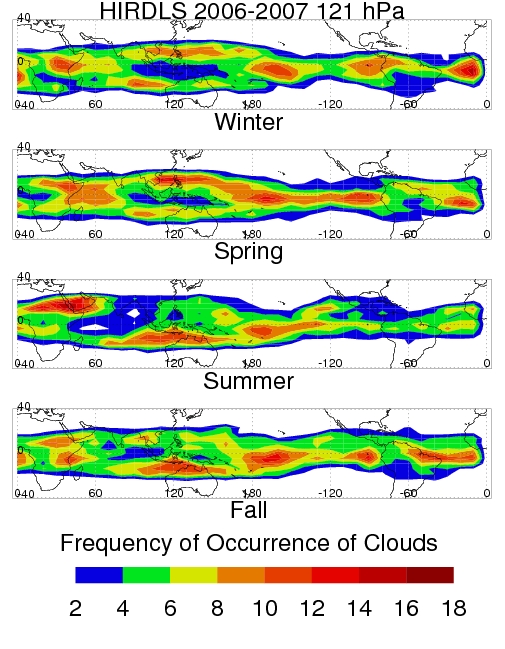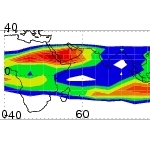Cirrus distribution mapped with HIRDLS
The vertical depths of cirrus in the upper troposphere vary from less to a kilometer to many kilometers. There is interest in knowing these depths in order to understand how cirrus contributes to the heating and cooling rates in the upper troposphere – a positive solar plus infrared heating rate will impart a positive enhancement to the vertical motion field. Measurements of cirrus by the HIRDLS experiment add to our knowledge base, since the HIRDLS experiment is sensitive to the presence of small amounts of cirrus along limb-views in the upper troposphere. Near Indonesia (longitudes around 120° E), cirrus of kilometer scale vertical thickness (shown here) occurs more frequently away from the equator than over the equator. This cirrus produces positive heating in the upper troposphere, while thicker cirrus over the equator has a cooling effect.

Figure.
Frequency of occurrence (%) of cirrus clouds at 121 hPa for the years 2006-2007 determined from HIRDLS observations. Near Indonesia (longitudes around 120° E), thin cirrus (shown here) occurs more frequently away from the equator than over the equator, producing positive heating in the upper troposphere. Thicker cirrus over the equator has a cooling effect. Ongoing research using this data will determine how this heating enhances vertical transport in the upper troposphere.
Steven Massie et al., NCAR, publication in preparation.
